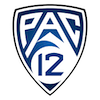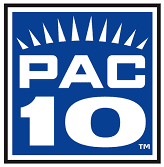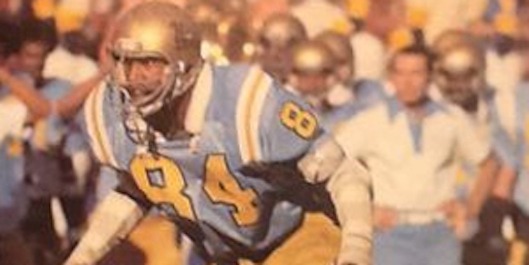
By Mark Schmor, SuperWest Sports
November 7, 2023
 To celebrate the history of the Pac-10/12 Conference in the wake of its demise, I’m putting together a series of Top 10 lists of players, coaches, teams, games, and plays.
To celebrate the history of the Pac-10/12 Conference in the wake of its demise, I’m putting together a series of Top 10 lists of players, coaches, teams, games, and plays.
 This week, I’m ranking the Top 10 linebackers since 1978
This week, I’m ranking the Top 10 linebackers since 1978
If there’s a particular name you don’t see on this list, know that there are a number of verified tackling machines that I couldn’t find space for, including a few of my personal favorites.
Honorable Mention
Ron Rivera, Cal (1980-83) and Ricky Hunley, Arizona (1980-83)
There are a dozen other guys who I could name as Honorable Mention guys but I wanted to specifically call out Ron Rivera and Ricky Hunley as they were Co-Defensive Players of the Year in 1983.Hunley was a two-time All-American at Arizona and was the first consensus All-American in Wildcat history.

Rivera—the same Ron Rivera who coached the Carolina Panthers to the Super Bowl and is still coaching in the NFL—led Cal in tackles for three years in a row and was also named an All-American as a senior.
They didn’t have the Butkus Award in 1983 but I feel comfortable saying that these two Pac-10 linebackers were the best two linebackers in the nation that year.
I don’t think there is any other season where that could be said of two linebackers in this conference.
No. 10 — Devin Lloyd, Utah (2017-2021)

For good measure, he also returned an interception for a touchdown in Utah’s Pac-12 Championship Game win over Oregon.
No. 9 — Pat Tillman, Arizona St (1994-1997)

Trying to figure out where Tillman should go on this list feels like the type of exercise he would have had no patience for.
If it’s possible to just think about Tillman’s career as a football player, then it’s worth mentioning that Tillman was a one-man wrecking ball for Arizona State.
He was a huge reason Arizona State had their best season in school history in 1996. The college football world first took notice of Arizona State that year when they beat top-ranked Nebraska 19-0.
Considering Nebraska was riding a 26-game winning streak after back-to-back undefeated seasons in 1994-95, that win has to be remembered as one of the best defensive performances in college football history.
He would go on to be drafted by the Arizona Cardinals and help lead them to their first playoff victory over the Dallas Cowboys.
It’s worth noting that Tillman, who was at ASU one year longer than Plummer, was also drafted by the Cardinals and also took part in that playoff win over the Cowboys during his rookie season.
No. 8 — Adam Archuleta, Arizona St (1997-2000)

Tillman left ASU and the rest of the Conference was happy to see him go, but then the Sun Devils just replaced him with another guy who would fly around the field like his hair was on fire.
It seemed like Tillman just cut his hair, changed his jersey number from 42 to 40, and kept right on terrorizing Pac-10 offenses.
Archuleta had 111 tackles as a junior and then posted 127 tackles as a senior. He graduated from Arizona State having made 54 tackles for loss in his career.
Like Pat Tillman, he capped his ASU career by winning the Pac-10 Defensive Player of the Year.
The biggest difference between the two was their draft positioning. Tillman, a 5-11, 204lb linebacker, wasn’t drafted until the Seventh Round because teams weren’t sure he was big enough to play linebacker in the NFL.
But the Cardinals had the good sense to turn him into a safety.
Archuleta was drafted in the first round, but like Tillman was also turned into a safety at the next level.
No. 7 — Eric Kendricks, UCLA (2010-2014)

(Unfortunately, our statistical records related to tackling aren’t very precise and there is some confusion as to whether we’re talking about “combined” tackles “solo” tackles, and “total” tackles, which includes both).
For a top-flight linebacker, getting 100 total tackles in a season is great stuff. I previously mentioned Devin Lloyd of Utah, who had 111 total tackles in 14 games the year he won Defensive Player of the Year.
Eric Kendricks? He had 101 solo tackles in 2014 and 149 total tackles, which led the nation.
I’ve never heard of a guy making more than 100 solo tackles in a season and it has me wondering how I’m possibly going to find five more guys as impressive as Eric Kendricks.
No. 6 — Chris Claiborne, USC (1996-1998)

A middle linebacker who picks off one pass is in the right place at the right time. A middle linebacker who picks off two passes has a “nose for the football.”
A middle linebacker who picks off six passes? That seems like a typo.
No. 5 — Rey Maualaga, USC (2005-2008)

He was a great player in his own right, but I will never be able to think about Maualaga apart from his fellow linebackers Brian Cushing and Clay Matthews III.
It was the fact Maualaga was determined to be the best linebacker of a trio that included two future NFL Pro Bowlers is impressive.
It was the fact that USC had all three of these guys roaming the field at the same time is insane.
They were by far the best linebacking corps in conference history.
No. 4 — Evan Weaver, Cal (2016-2019)

As a junior, he had 159 tackles. 159 tackles! That’s a ton. He also had a pick-six in a 12-10 upset of 15th-ranked Washington and there are few things I love more than a defensive touchdown in a low-scoring bloodbath.
Remember when I said Evan Weaver had 159 tackles as a junior? Well, he had 182 tackles as a senior—182! As you might expect, he was named All-American and Pac-12 Defensive Player of the Year.
The easiest broadcasting job in all of sports had to be the Cal radio announcer in 2019 when he just had to say “Evan Weaver with the tackle” over and over and over again.
No. 3 — Scooby Wright, Arizona (2013-2015)

As a sophomore, he won the Nagurski Trophy, the Lombardi Award, the Jack Lambert Award, the Chuck Bednarik Award, and the Pac-12 Defensive Player of the Year.
He was also the only defensive player in the nation to finish in the Top 10 of the Heisman voting. He finished that year with 163 tackles, 14 sacks, and 29 tackles for loss. Oh, and did I mention he did all of this as a sophomore?
I think Scooby Wright’s sophomore season is probably the best individual season of any guy on this list.
The only reason I didn’t slide him into the top spot is that we were robbed of an encore when Wright only played three games as a junior due to a major injury.
No. 2 — Junior Seau, USC (1988-1989)

He went on to become one of the greatest linebackers in NFL history.
I remember hearing a story that USC coaches had to force Seau to sit out certain drills because he was so dominant against the offensive linemen he was matched up against that he would ruin the drill for all involved.
What I find amazing in thinking about Seau is the number of NFL Hall of Famers USC produced.
USC NFL Hall of Famers Drafted in the Pac-10/12 Era
- Anthony Munoz, offensive lineman, 1980
- Ronnie Lott, defensive back, 1981
- Marcus Allen, running back, 1982
- Bruce Matthews, offensive lineman, 1983
- Junior Seau, linebacker, 1990
- Tony Boselli, offensive lineman, 1995
- Troy Polamalu, defensive back, 2003
That’s seven of the best football players of all time, including a few guys who are arguably the greatest to ever play their position.
A quick count of the other schools in the conference shows eight guys from the other eleven schools combined who have been elected to the Hall of Fame in the same span of time.
No. 1 — Jerry Robinson, UCLA (1975-1978)

He was also the only conference linebacker named to the Walter Camp All-Century Team, which at least separates him from every conference linebacker in the 1980s and 1990s (including the great Junior Seau).
Robinson finished in the Top 10 of the Heisman voting in 1978, a distinction he shares with Scooby Wright and Rey Maualaga, but those two guys played in a different era than Robinson.
They had the benefit of things like ESPN SportsCenter and College Gameday, which could cut together highlight reels and put forward certain narratives about individual players.
Most of their games were broadcast on national television.
Think about what it took for a defensive player to be a Heisman candidate in 1978. It was almost entirely word of mouth.
It would have required things like a sportswriter seeing UCLA play in person, recognizing that #56 keeps making tackle after tackle, and being so impressed by it that he told another sportswriter.
It would have required opposing coaches to make similar observations and to share those observations with members of the media.
Jerry Robinson didn’t win the Heisman, of course. But just to be considered during that era while playing the position he played tells us everything we need to know.
-
Mark Schmor’s Top 10 Safeties of the Pac-10/Pac-12 Era
> The ninth in a series of lists ranking the best players, coaches, teams, games, and plays - November 30, 2023 -
Mark Schmor’s Top 10 Cornerbacks of the Pac-10/Pac-12 Era
> The eighth in a series of lists ranking the best players, coaches, teams, games, and plays - November 21, 2023 -
Mark Schmor’s Top 10 Linebackers of the Pac-10/12 Era
> The seventh in a series of lists ranking the best players, coaches, teams, games, and plays - November 7, 2023

